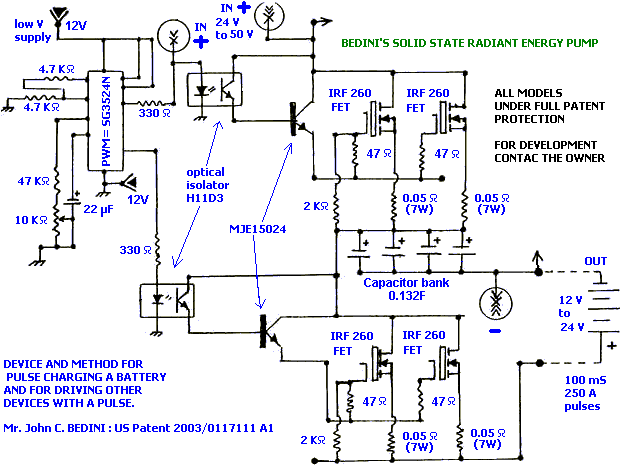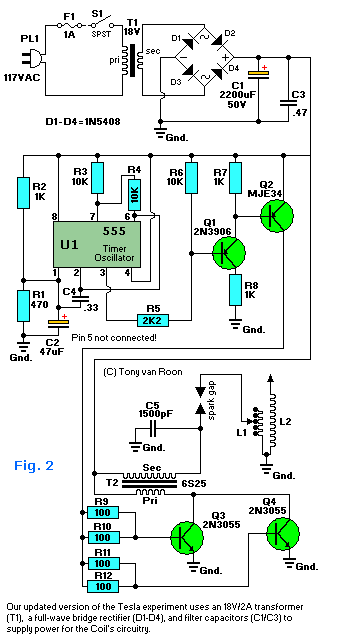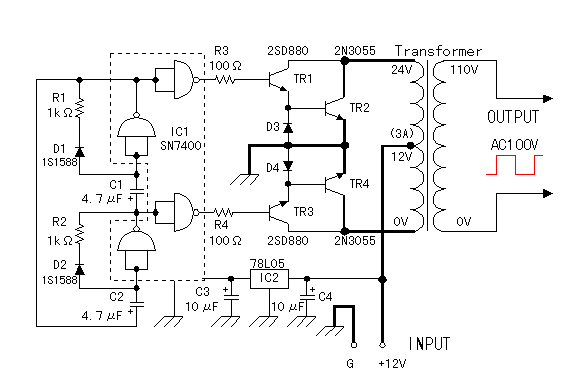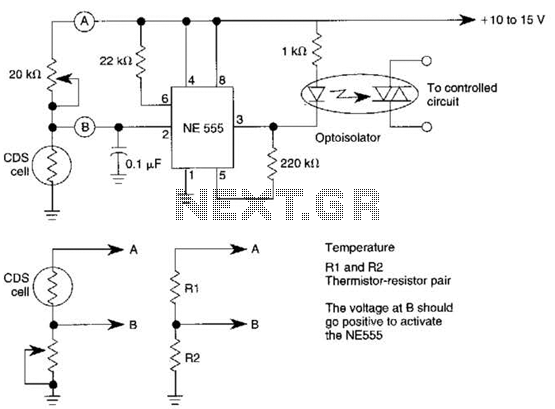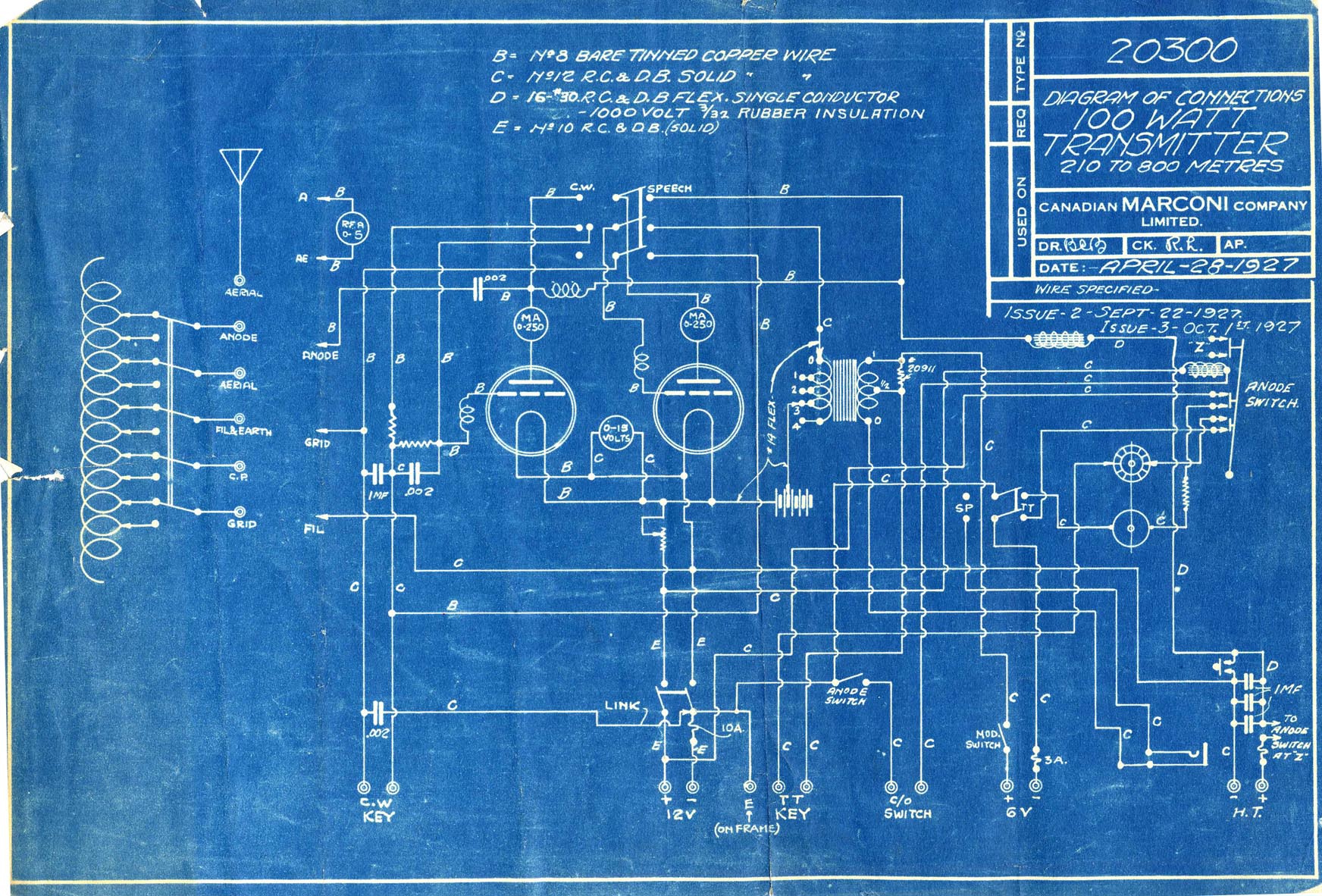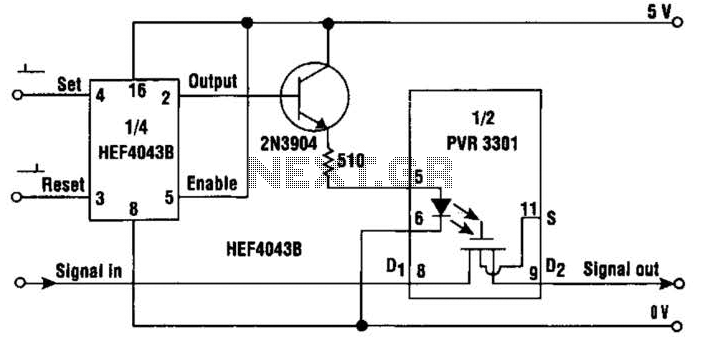
Medium Solid State Tesla Coil
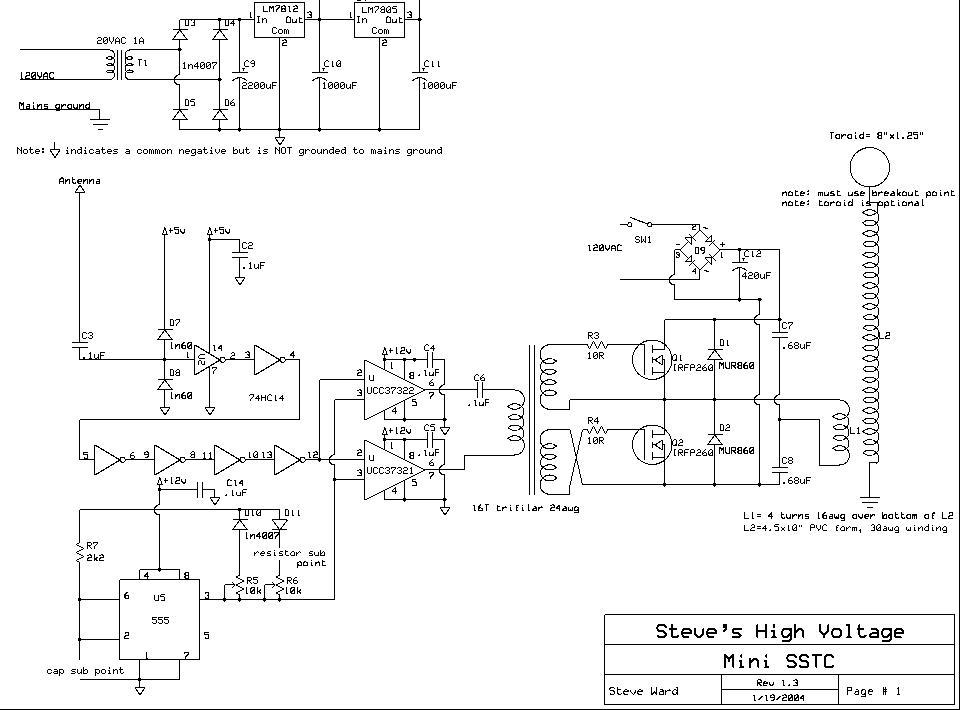
The design is a clone of Steve Ward's MiniSSTC circuit; the schematic is reprinted here with credits to Steve Ward. This circuit performs very well for a low power and simple SSTC. The design is based on Steve's final revised circuit that employs only four ICs.
The Mini Solid State Tesla Coil (MiniSSTC) circuit is a compact and efficient high-voltage generator that operates with low power requirements, making it suitable for educational demonstrations and hobbyist projects. The circuit utilizes a limited number of integrated circuits (ICs), specifically four, to achieve its functionality, which simplifies both the design and construction process.
At the core of the MiniSSTC is a feedback oscillator configuration that drives a power transistor or MOSFET. This component is responsible for switching the power supply on and off at high frequencies, generating high-voltage output through a resonant transformer. The feedback mechanism ensures that the oscillation remains stable and self-regulating, which is crucial for maintaining consistent performance.
The schematic provided includes essential components such as the primary and secondary coils, which are tuned to resonate at the same frequency, maximizing energy transfer and producing a high-voltage output. The design also features a simple driver circuit, which can be built using readily available components, ensuring accessibility for those new to electronics.
Moreover, the circuit's low-power operation allows it to be powered from standard power supplies, reducing the need for specialized or high-voltage equipment. This enhances safety and ease of use, making the MiniSSTC an ideal choice for educational purposes or as a prototype for further development.
In summary, the MiniSSTC circuit is an effective and user-friendly design that exemplifies the principles of solid-state Tesla coils while maintaining a focus on simplicity and efficiency. The use of only four ICs streamlines the assembly process, making it an excellent project for both beginners and experienced electronics enthusiasts.The design is a clone of Steve Ward`s MiniSSTC circuit; the schematic is reprinted here with credits to Steve Ward: 9schem. jpg. This circuit performs very well for a low power and simple SSTC. My design is based on Steve`s final revised circuit that employs only four ICs. 🔗 External reference
The Mini Solid State Tesla Coil (MiniSSTC) circuit is a compact and efficient high-voltage generator that operates with low power requirements, making it suitable for educational demonstrations and hobbyist projects. The circuit utilizes a limited number of integrated circuits (ICs), specifically four, to achieve its functionality, which simplifies both the design and construction process.
At the core of the MiniSSTC is a feedback oscillator configuration that drives a power transistor or MOSFET. This component is responsible for switching the power supply on and off at high frequencies, generating high-voltage output through a resonant transformer. The feedback mechanism ensures that the oscillation remains stable and self-regulating, which is crucial for maintaining consistent performance.
The schematic provided includes essential components such as the primary and secondary coils, which are tuned to resonate at the same frequency, maximizing energy transfer and producing a high-voltage output. The design also features a simple driver circuit, which can be built using readily available components, ensuring accessibility for those new to electronics.
Moreover, the circuit's low-power operation allows it to be powered from standard power supplies, reducing the need for specialized or high-voltage equipment. This enhances safety and ease of use, making the MiniSSTC an ideal choice for educational purposes or as a prototype for further development.
In summary, the MiniSSTC circuit is an effective and user-friendly design that exemplifies the principles of solid-state Tesla coils while maintaining a focus on simplicity and efficiency. The use of only four ICs streamlines the assembly process, making it an excellent project for both beginners and experienced electronics enthusiasts.The design is a clone of Steve Ward`s MiniSSTC circuit; the schematic is reprinted here with credits to Steve Ward: 9schem. jpg. This circuit performs very well for a low power and simple SSTC. My design is based on Steve`s final revised circuit that employs only four ICs. 🔗 External reference
